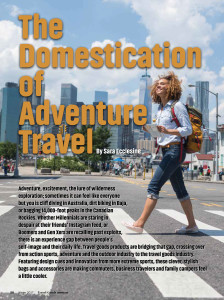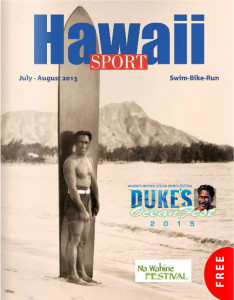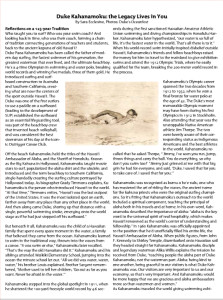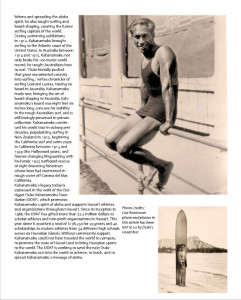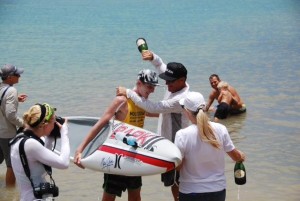Adventure, excitement, the lure of wilderness exploration; sometimes it can feel like everyone but you is cliff diving, riding dirt bikes in Baja, or bagging 14,000-foot peaks. Whether Millennials are staring in despair at their friends’ Instagram feed, or Boomers and Gen Xers are recalling past exploits, there is an experience gap between people’s self-image, and their daily life. Travel goods products are bridging that gap, crossing over from action sports, adventure travel and the outdoor industry to the travel goods industry. Featuring design cues and innovation from more extreme pursuits, these clever, stylish bags and accessories are making commuters, business travelers and family campers feel a little cooler.
Franz Wieshuber, SVP sales and marketing for LCI Brands, sees this as part of a larger authenticity trend. “Consumers want to feel brand authenticity. I’m not sure many people really need a Yeti ice chest that keeps your beer cold for a week. Nevertheless, that’s what they’re willing to pay for. The same applies to an Osprey backpack. Very extreme, but my kid uses it for a school backpack because it’s cool.” Consumers are voting with their wallet to get all the technology and authenticity they can afford, rather than all the technology they need.
In some instances, bags with a rugged style and outdoor credibility appeal to consumers who will never take the road less traveled, just as kids in the Midwest buy surf trunks, boomers own “Born to Be Wild” motorcycle jackets but no motorcycle, and commuters tuck their laptop in a bike messenger bag even if they’ve never delivered a package on a “fixie” bike.
Other travelers remember an adrenaline-fueled life before family and work took priority, and have preserved a taste for brawny products and niche brands. OGIO marketing manager Nathan Adelman calls this a “moto attitude.” Similarly, United by Blue customers have an outdoorsy attitude, whether they are “taking our backpack camping or on the subway, or wearing our flannel for fly fishing or bar hopping” shares United by Blue PR Associate Ethan Peck.
The adventure-crossover trend has spawned best-selling products for companies in the travel goods industry, as well as their retailers. Read on for products that are expanding the appeal of travel goods, and the specific market segments they address.
Attainable Adventure
Wieshuber uses a term from the outdoor industry to describe the weekend-warrior market segment: “outsidesy.” He acknowledges that “the top of the outdoor/adventure pyramid is small and extreme, but the middle/bulk of the market is vastly larger and more moderate. These consumers are called ‘outsidesy’ rather than ‘outdoor extremists.’ We’re the car campers, weekend warriors, etc. We love the extreme brands, but really don’t need the true extreme functionality of many of their products.”
During weekend trips and active vacations, the outsidesy consumer practices a kind of do-it-yourself (DIY) glamping. Their picnics and car camping trips get them out, but not that far out. And often they are taking all the comforts of home along with them. One key supplier of the DIY glamping set is GSI Outdoors, and their sister company Outside Inside Games. As described by Co-Owner Don Scott, this fun-loving family business “began as a collection of enamelware and has evolved to include everything needed for exceptional food and drink in the outdoors as well as for fun campground games. We consider ourselves to be at the forefront of glamping and hope our customers will enjoy raising a GSI Outdoors Nesting Wine Glass as they play a fierce game of Outside Inside Backpack Bocce!”
Another key characteristic of the outsidesy consumer is that they see no need to unplug, and are always Instagram-ready. LCI Brands has developed a comprehensive collection of WaterSeals™ pouches and hard cases, allowing their customers to bring all their electronics with them into the great outdoors. Wieshuber shares that “our new WaterSeal magnetic waterproof pouches have really taken off and we’re expecting a big year next year.” The cell-phone size WaterSeals Floating Waterproof Zip Pouch is touchscreen, camera and video usable. And the tablet-size WaterSeals Magnetic Waterproof Phablet Pouch not only allows your tablet to function as an underwater camera, voice and audio function work through the bag. So you can not only record and share video and images, you can take a break from your boating or swimming to watch the latest lol cat video.
The Weekday Style of Weekend Warriors
The outsidesy consumer doesn’t change their identity when they go from the weekend to the weekday. They still think of themselves as adventurous, rugged and attuned to nature, and they want workweek accessories that fit both their sense of self, and have the technical features they’ve come to expect.
The United by Blue 30L Base Backpack is sold in a variety of colors that reference the outdoors, including a topography print that specifically evokes mountaineering adventures (for the former girl scouts and boy scouts who remember learning to count contour lines). Peck describes United by Blue packs as being “durable, functional, and the perfect size to take you from the office to the outdoors” and the 30L Base Backpack is all of that. Voluminous enough to use as luggage (for the experienced packer) and sturdy enough to be a day pack, it also has tech features like a laptop sleeve. And like all United by Blue packs, it’s made from recycled polyester and vegetable tanned leather and comes with a lifetime guarantee. It’s a great multi-use bag for someone whose self-image (but not their full-time occupation) is adventure.
United by Blue’s bags are also intimately connected to their mission to remove a pound of trash from the water for every product they sell. In 2010, United by Blue hosted their first cleanup the same week they sold their first T-shirt. In the seven years since then, they’ve planned 202 cleanups in 27 states, removing 1,039,456 lbs. of trash. The mission of United by Blue has become a way to engage with customers. “We are focused on building relationships with consumers by facilitating incredible experiences through the lens of sustainability and conservation” says Peck. “Our pledge to remove one pound of trash per product sold means rallying our team and like-minded volunteers to pick up plastic bottles, tires, appliances, and even abandoned trucks from rivers, streams, creeks, and beaches. Our commitment has really resonated with our customers, both consumers and retailers who also feel strongly about responsible, durable goods.”
OGIO is known for overbuilt bags aimed at the motorsports industry. In the opinion of Adelman, “picking out a backpack is similar to picking out clothes. People have a style preference, and they value a sense of style. Bags such as the OGIO Rebel Pack LE Benjamins Backpack (with a $100 bill printed fabric exterior) is an example of a strong style statement. It’s a moto attitude that can be carried over into a person’s daily life, whether they’re going to a business meeting or out with the family on the weekend.”
While many bags designed for extreme sports and outdoor applications are more than adequate for work day and commuter use, the workweek is also enhanced by accessories crossing over to the travel goods industry from the outdoor industry. GSI Outdoors has taken the evolution of adventure travel products from classic camping and hardcore backpacking to glamping, and one step further to daily lifestyle items like the Stainless Commuter Java Press. This coffee press can be used to make French press-style coffee while camping or backpacking, but you can also drink out of it in the car like a travel mug. This means the very same, very personal product can be used for a weekend of backpacking as well as a week of commuting.
While LCI has found success with WaterSeals waterproof pouches and cases for electronics, Matador is selling out of the Droplet XL, a fully functional drybag that protects 20 liters of gear, but stuffs down into a palm-size silicon carry bag attached to an aluminum carabiner. While the Droplet XL would function perfectly well on a serious white-water rafting expedition, it also works in everyday life to hold damp clothes or a wetsuit after a gym visit or a pre-work surf session. A drybag is an adventure staple, and by making a drybag this small, light and convenient, anyone can have a Droplet XL clipped to their daily briefcase or laptop bag in case of emergency.
Adventure to Travel Crossover
When the outsidesy consumer does go on a work trip or family vacation, they choose luggage, carry-ons and personal items with innovative outdoor-capable features and an adventurous appeal. One example is the Matador Hydrolite hydration pack, a feature-rich, packable 8L bag which includes a 2L bladder, in-line Sawyer® MINI water filter, and a fully-waterproof main compartment with sealed seams. The water filter is in the tube of the hydration bag, so after you fill up the bladder, the water is filtered automatically as you drink through the tube. Instead of taking a small daypack and buying an endless number of bottles of water while exploring a new city, many travelers are choosing the Hydrolite. Tamara Keller, director of sales for Matador has seen that “travelers want high-end and will pay for quality products, with new technology – and that’s where Matador exceeds. The consumers have spoken, and the travel industry is changing and morphing into a new generation of high-end, amazing quality, hip bags.”
Eagle Creek also excels at developing travel goods versions of outdoor industry staples. As an example, where Matador reimagined the hydration pack, Eagle Creek took an internal frame pack for backpacking and turned it into the perfect piece of luggage. The Deviate Travel Pack 60L is available in a men’s and women’s fit, as well as in a larger-volume model. The Deviate unclips to become a carry-on size 45L travel backpack with a 15L clip-on daypack. The bag has an obvious backpacking lineage, so it will to appeal to a traveler with an outsidesy self-image, as well as the need or desire to carry their own stuff. However, the Deviate is not a dumbed down expedition piece, it’s a been smartened up for travel. Urban-travel features include the Check-in Fly™, Digital Safe-Zone and RFID pocket, as well as full integration with Eagle Creek’s Pack-It™ System. The Deviate is also lockable, with reflective accents for nighttime visibility while walking through a city. The Check-in Fly requires explanation: it’s a rain fly of the type found on some serious hiking backpacks, but it includes a zipper which closes it up over the backpack straps, and two handles to turn it into a duffle. This feature protects the bag from snagging and damage by airline baggage handlers.
Of course, some of the bags consumers choose for vacations and work trips are truly designed to be used for a completely different purpose, like a hike through the Himalayas or schlepping motorcycle gear. But the fact that they are over-built for an extreme user makes them appealing to the average outsidesy traveler, who is attracted to a bag with serious durability and authenticity.
Adelman believes this is a prime strength of the OGIO brand. “OGIO has always resonated with Moto GP and non-traditional 2-wheel and 4-wheel sports. OGIO is for the on-the-go adventurer, whether they are hiking, dirt biking or on a trip to Paris, they are all adventures for the person who is doing it. It’s a state of mind, that carpe-diem attitude, it’s not an age or an activity. We see OGIO bags as your partner in crime. “
A perennial favorite in the OGIO collection is the Rig 9800 Travel Bag, designed primarily for hauling moto gear to the track. With a completely solid hard-shell bottom called The Sled, and a 7500-cubic-inch capacity, the Rig 9800 tips the scale at 14.2 lbs. But for those who need to take many trips a year and haul a lot of gear, the overbuilt, voluminous Rig 9800 is the way to go.
Adelman reflects on success bred from authenticity: “Between Callaway and OGIO we are involved in a lot of sports that have a really avid, loyal fan base. We are known for golf and moto sports such as dirt biking, but also triathlon: we make a bag for Ironman with wet/dry pockets and space for water bottles and a helmet. Discerning, avid users are the best customer base because they will pay more to buy a superior product, either because they need the features, it fits their self-image, or both. That is where we win.” Adelman’s statement applies to the many brands in travel goods selling product for adventure-minded consumers. Outdoor and adventure style, authenticity and features combine to form a compelling reason to buy that benefits all of us in the travel goods industry.
This story originally appeared in the Winter 2017 issue of Travel Goods Showcase
